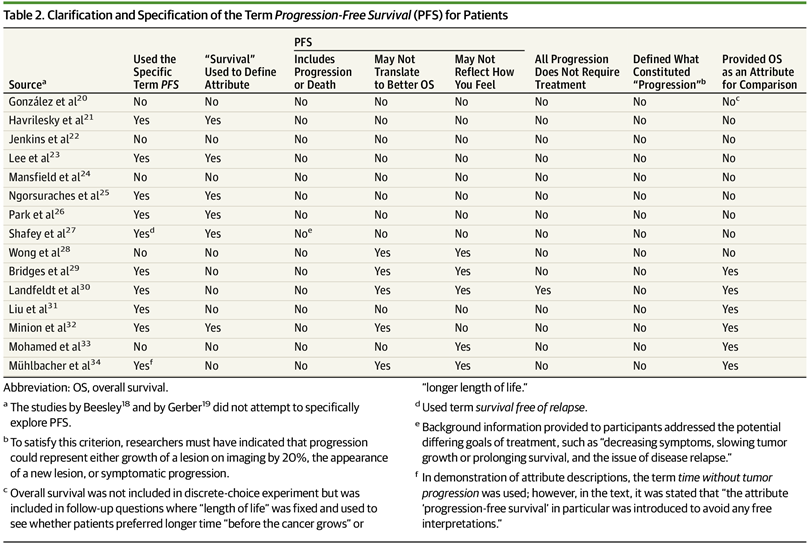Progression-free survival (PFS) is a surrogate endpoint and is defined as follows (by ChatGPT):
Essentially, PFS refers to the period of time during a clinical trial or treatment plan in which a patient’s disease does not worsen or progress. For example, in cancer research, the time from the start of treatment to the appearance of signs of cancer growth, spread or relapse is measured.
Understanding PFS is critical because it helps doctors and researchers assess the effectiveness of a treatment in controlling the disease. A longer PFS suggests that the treatment is successful in slowing disease progression. This key figure is particularly important in clinical studies when it comes to comparing different treatment approaches or medications.
An important question is: Does PFS matter to patients? The answer could be yes, as better PFS usually (but not always) correlates with longer survival. However, do patients estimate PFS independently of OS? Maybe yes, if their quality of life is better in the pre-progression phase (ie they have fewer symptoms). Or perhaps they are less afraid if they know their cancer has not progressed.
What does the literature say?
An article by Raphael et al. (2019) conducted a systematic literature review of studies assessing whether patients with advanced cancer understand and value PFS. A total of 17 studies met their inclusion criteria. Of these:
Ten studies specifically introduced the term to patients progression-free survival as an attribute choice. In the terms used to define the PFS attribute, this term was used in 6 studies Survive. Five studies clarified that PFS may not result in better overall survival, and five studies stated that improvements in PFS may not reflect patient well-being. No study made it clear that a PFS event could represent either progression or death, and no study defined for the patient what constituted progression. In the studies reviewed here, ethnic and racial minorities were underrepresented (mean percentage of white patients, 88%; range, 77%–96%). Values and preferences may vary by cultural background, as different relative preferences have been assigned to cost and effectiveness outcomes in North American and Asian studies, although few studies have been evaluated.
As you can see from the table below, there is significant heterogeneity in the way PFS was presented to cancer patients surveyed.
In some studies, PFS was the most important characteristic. In other cases, quality of life factors were more important. Overall, however, it is clear that further research is needed to fully understand how patients perceive the value of PFS.
